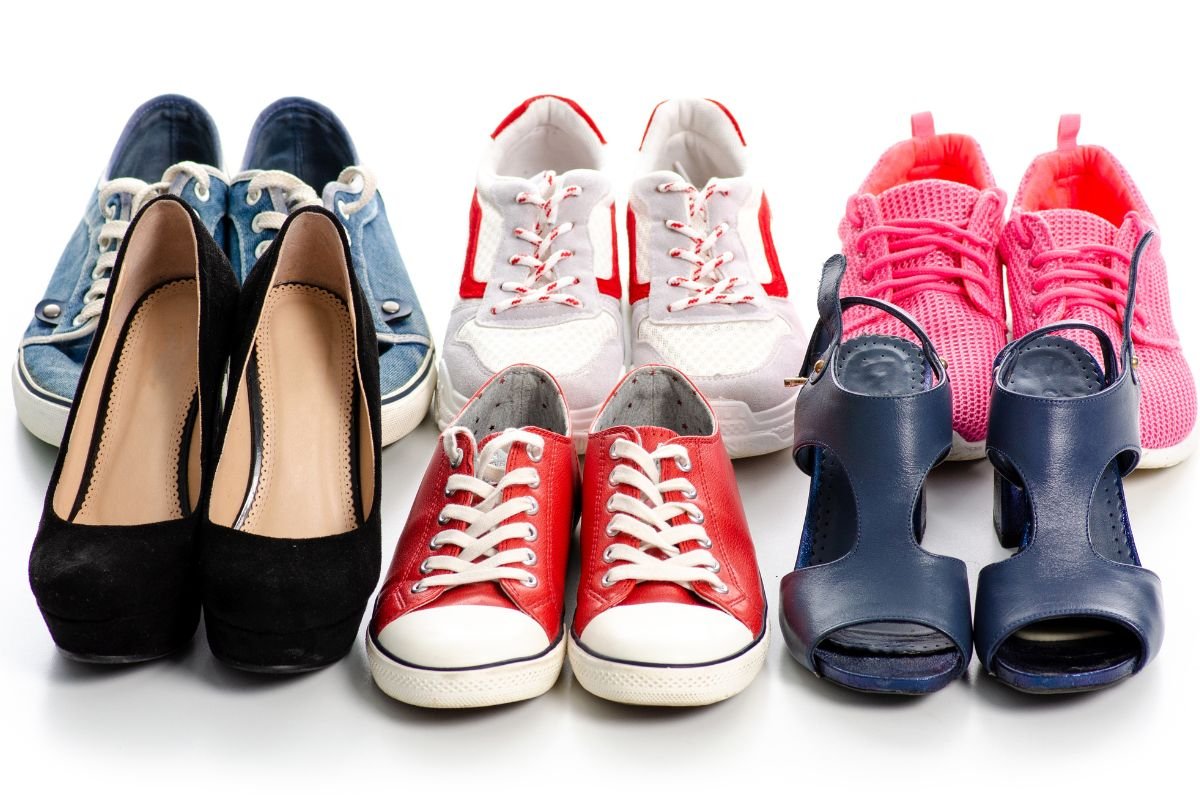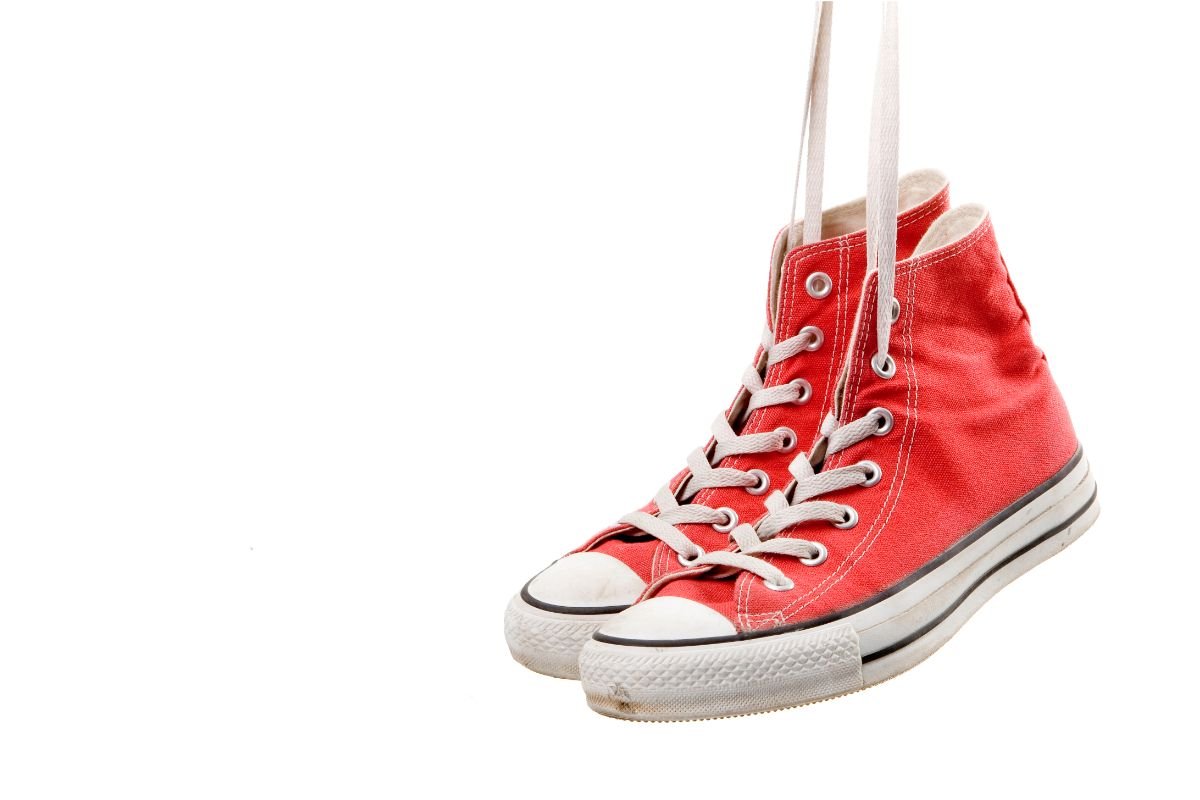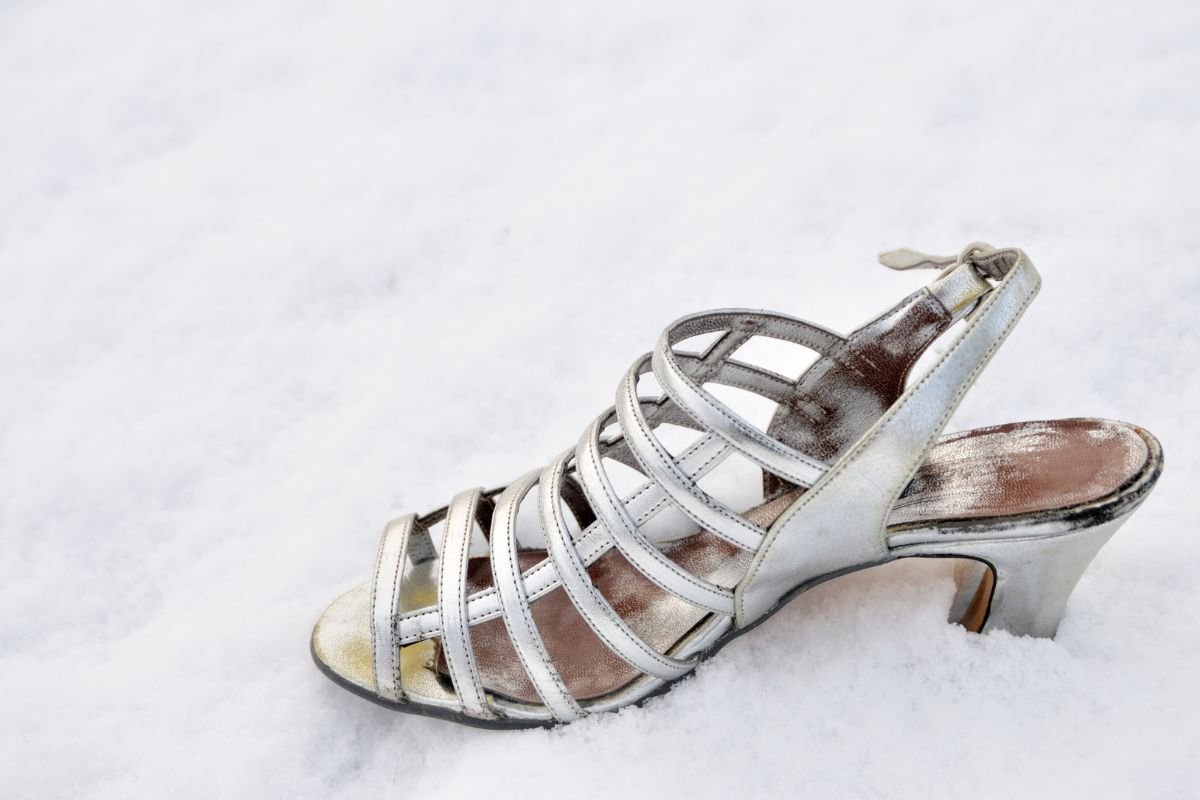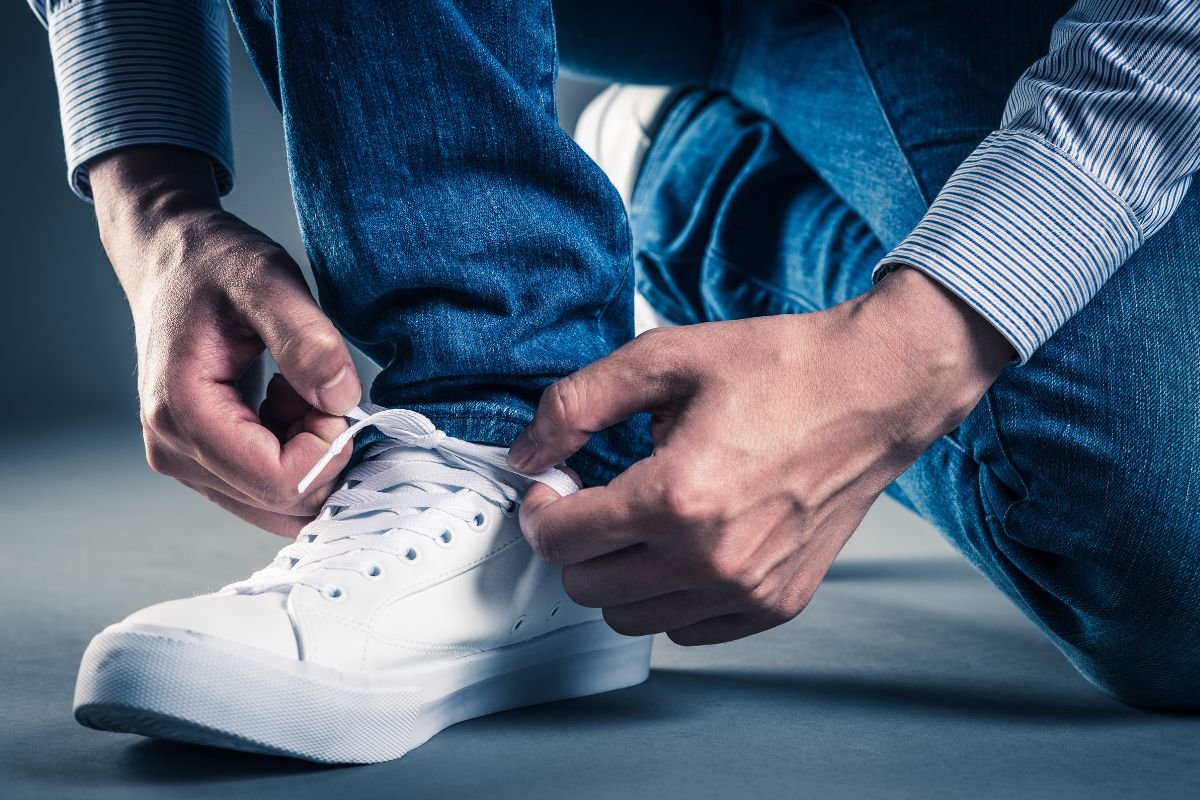When looking for a new pair of shoes to buy, you are probably thinking a lot about the style you want, the color, and the design of the shoes.
However, there should be one more thang that you need to think about, and that is the material of the shoes. This is very important to think about when buying new shoes because the material not only affects the shoe’s price but also how long the shoe will last with a lot of wear.

7 main materials are used to make shoes. Each one has a different level of quality as well as longevity.
Here are the 7 standard shoe materials.
1. Leather
Leather is a very common material used in shoemaking. It originates from the skins and hides of various animals, such as cows, snakes, and crocodiles, among others.
It is a material that is frequently used in the production of dress shoes for both men and women, and it is an excellent choice for people looking for comfort as well as durability.
Leather has several advantageous qualities, one of which is its elasticity, which lets it be stretched without becoming damaged. Because it is also a breathable material, your feet won’t get too hot and sweaty in the shoe.
Leather shoes need a lot of maintenance than other materials would. The better you take care of the shoes, the longer they will last.
Leather shoes are quite expensive, but purchasing a high-quality pair of shoes made of genuine leather is an investment that will pay off in the long run.
2. Canvas
Hemp is the original material used to make canvas. It is frequently used in the production of sneakers these days.
Canvas is used by almost every shoe brand to make their products as it allows for a lot of variety and creativity in the designs that can be created using the material.
This shoe material is simple to clean. Canvas also takes colors very well without much effort.
When looking for a pair of canvas shoes, you will have a wide number of options to select from because they come in many different colors.
In addition, canvas does not stretch nearly as much as other materials, which means that your brand-new pair of shoes will keep their shape without the need for shoe inserts.
However, there is one drawback to this shoe, and that is the fact that it does not provide any support for the ankle. This leaves your ankle vulnerable to injury if you wear them during sports.
3. Textiles
Cotton, nylon, wool, and polyester are the types of materials that are most frequently used in the textile industry. The production of textiles allows for a wide range of fibers, weaves, knits, and deniers.
You can be guaranteed to get a one-of-a-kind shoe that complements both your design and your style if you use cloth.
However, when selecting a particular pair, you should take into consideration aspects such as breathability, support, and temperature control.
4. Natural Rubber
Rubber is frequently used in the production of soles for footwear, particularly in the sports business. Tennis shoes and running shoes both have soles made of rubber.
There are also several shoes produced from natural rubber that are environmentally friendly.
Rubber-soled shoes can be worn year-round, in contrast to leather-soled shoes, which are best suited for the warmer months.
Your rubber-soled shoe will keep you dry and safe regardless of the weather conditions, whether it’s snowing or raining.
Wearing shoes with a sole made of rubber rather than leather is not only more comfortable but also more cost-effective.
The natural rubber has eclipsed typical polyester in terms of popularity over the years as a result of the eco-friendliness of the material.

5. Synthetics
These materials are man-made and consist of two distinct layers. They are also referred to as PU leather or synthetic leather.
When compared to other pricy materials such as leather, shoes that are constructed from synthetic materials are typically more cost-effective from the point of view of both the manufacturer and the end user.
The quality of the synthetic material that was used to make the shoe determines how long it will last. The quality of some will be better than others.
Typically, synthetic shoes are so cheap because they are not made of good quality materials. Because of this, they tend to get worn out after just a few months of wear.
6. Foam
Foam is mostly manufactured from plastic and is used to provide support to a wide variety of shoe styles, including those constructed from leather, synthetic materials, rubber, and textiles.
There are two distinct types of foam: open cell and closed cell. Open cell foam has components that enable air and water to pass through, while closed cell keeps all of that heat in.
Foam is typically found on the collars and tongues of different types of footwear.
7. Denim
While denim used to be only used to make jeans, a lot of clothes are not made from this material.
Many people who are looking for fashion-forward footwear now consider denim to be an essential component of their wardrobe.
It can be used to make a wide variety of footwear, including wedge sandals, ballet slippers, sneakers, and flats. Given that denim is a fabric, washing your denim shoes is as easy as throwing them in the washing machine.
In comparison to other materials, such as leather, they come at a far more reasonable price.
Summary
If you are aware of the materials used in the construction of a certain pair of shoes, it will be much simpler for you to choose which pair to buy and when to wear them.
You will want to think about how long you want the shoe to last, how well the material copes in wet or snowy conditions, and how much upkeep they need to stay looking new.
Comfort is also a very important factor, so be sure to try the shoes on first!
- 15 Amazing Vegan UGG Boots Not To Miss Out On - November 23, 2022
- 15 Vegan Running Shoes To Brighten Up Your Wardrobe - November 23, 2022
- 8 Best VEJA Vegan Sneakers To Buy Today - November 22, 2022










